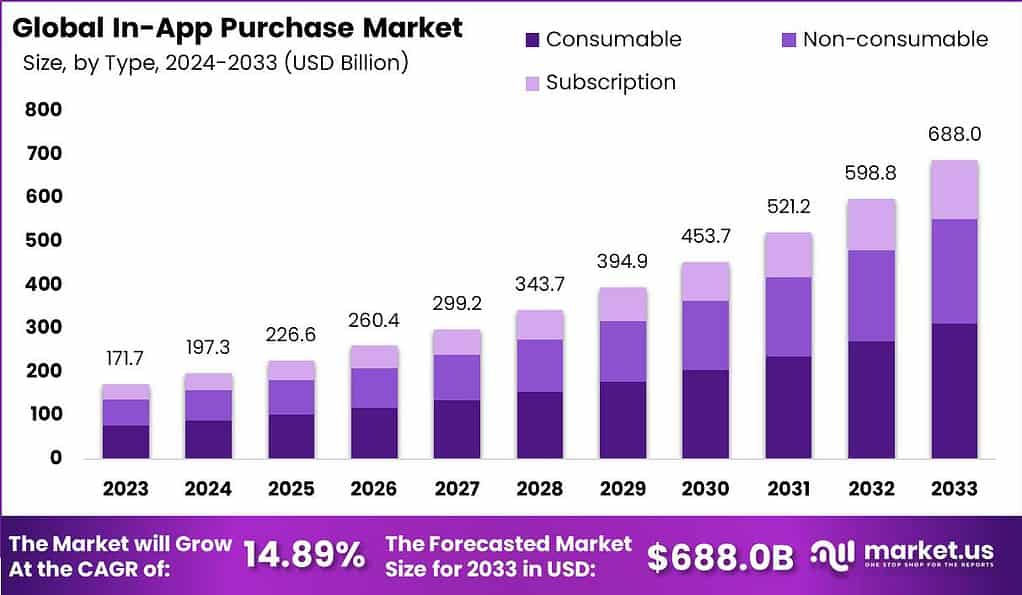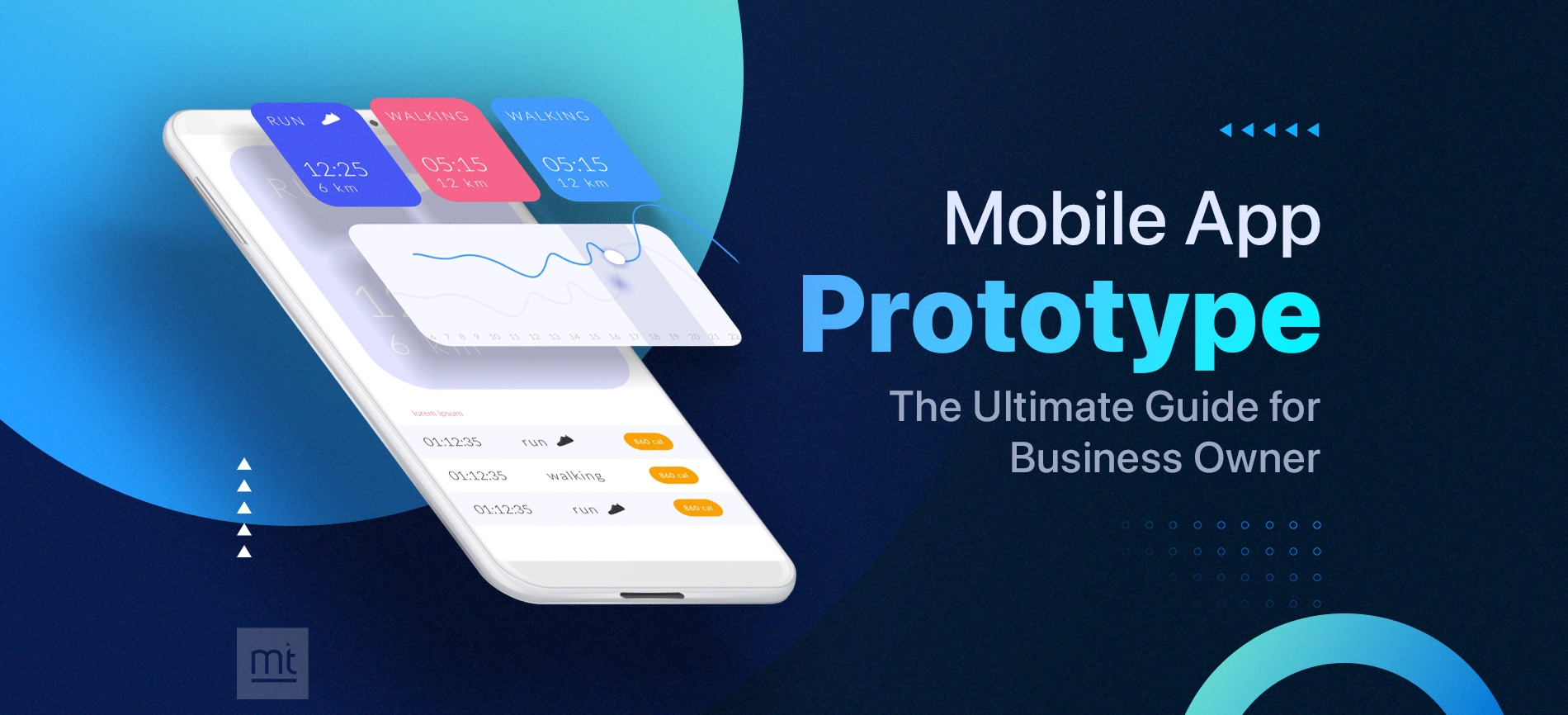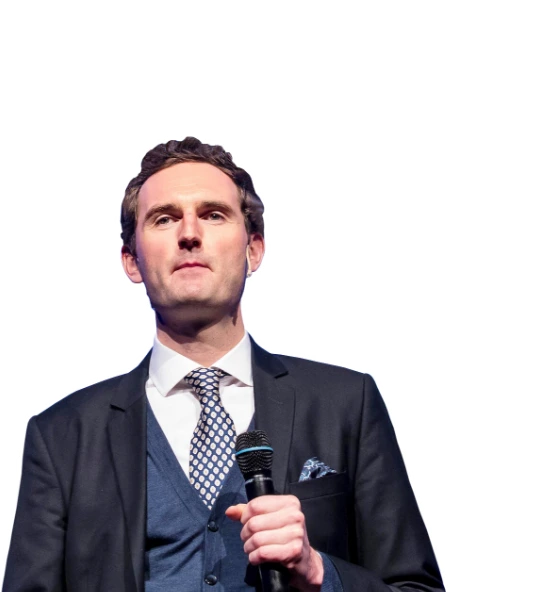Key Takeaway
If your app is not making money yet, you must learn about the right monetization approach.
By reading this blog, you’ll learn:
- The most popular app monetization models (in-app purchases, paid downloads, sponsorships)
- How to select an app monetization model that aligns with your target audience?
- What are the challenges related to monetization strategies, and how can you overcome them without harming user experience?
In this blog, we will explain popular strategies and give you insights to grow your ROI by selecting the best monetization plan.
What is Mobile App Monetization and Why Mobile App Monetization Matters?
Mobile app monetization means making money from your app by using strategies like in-app purchases, ads, subscriptions, or sponsorships. According to Statista research, 97% of Android apps and 95% of iOS apps are free to download. With so many free options available, most users won’t pay for an app unless they immediately see its value. In today’s fast-growing, competitive app market, monetizing mobile apps has become a big question for the majority of business owners. The right mobile app monetization strategies can help you earn from your app investment while keeping your users engaged and happy.
If you have developed an innovative app, but don't know how to monetize a mobile app, then read this article till the end to learn about different mobile app monetization models, strategies, challenges, and other useful information to pick the right monetization strategy tailored to your business objective.
If you’re wondering why monetization matters, these figures say it all:
- Global mobile app revenue reached $935 billion in 2023.
- According to market US reports, the global in-app purchase market is expected to reach USD 688 billion by 2033.
- Over 70% of app income comes from advertising and in-app purchases.
- On average, it costs about $2.50 in advertising to get one person to download and use a mobile app.
- For most apps, only about 20% of users keep using them 30 days after downloading.
In the U.S., people spent about 16% more on in-app purchases in 2024 compared to 2023, according to Sensor Tower.

Top Mobile App Monetization Strategies (How to Monetize Mobile App?)
You can monetize your mobile app through models like in-app advertising, a freemium plan with paid add-ons, or a subscription service to have a stable cash flow. Other methods include paid downloads, selling in-app items, joining affiliate programs, or using data monetization. To get most of your monetization, you must choose the strategy according to your app’s purpose and audience.

Let's go through all the mobile app monetization strategies one by one to get more clarity.
#1. In-App Advertising
This is one of the most common ways to earn from free apps. You earn money by showing ads like banners, videos, or pop-ups inside your app. The more users engage, the more you earn.
Here, you don’t have to spend money creating ads yourself. You just need to connect your app to an ad network such as Google AdMob, Facebook Audience Network. They provide ready-made ads from other businesses, so you simply provide the space, and you’re paid for views or clicks. If you want to show the ads of your product, then you might need to invest in developing your custom ad. Place the ad in the proper location so that it doesn't disturb users using the app.
Example: Candy Crush Saga, Facebook, and many other apps use video ads and banners in their free version.
#2. Freemium Model
In the freemium model, you offer a basic version of your app for free but lock premium features. Users can enjoy the free parts and choose to upgrade if they want more tools, content, or customization.
This approach attracts a wider audience because there’s no initial cost, and it lets users test your app before spending money.
For example, today most of the OTT platforms and music apps use a freemium model. They offer limited shows and music in a free trial, and an option to upgrade to a premium plan if the user wants to access premium content.
#3. Subscription-Based Model
Did you know that 96% of the money spent on iOS and Google Play apps comes from subscriptions?
Here, there is no free trial available. Users pay a recurring fee on a monthly, quarterly, or yearly basis to access your app’s content or services. This is best for you if your app is well-established and marketed properly, as users will easily pay to access the service.
You must focus on delivering continuous benefits so people feel it’s worth renewing.
For example, Netflix, Amazon Prime Video, and many other OTT services only allow access to movies and shows if users have a subscription. They have different subscription plans,i.e, monthly, yearly, and extra add-ons for unlimited streaming.
#4. Pay to Download (Paid Apps)
Paid apps can be used only by users when they pay as a one-time purchase for downloading the app and using it unlimitedly. It works well if your app offers unique, high-value features that are different from other free alternatives in the market.
As the majority of users prefer to use free apps, you’ll need strong marketing, good reviews, and a clear value proposition so people feel confident paying before trying the app.
Example: the game applications like Grand Theft Auto and Minecraft are paid apps that are compulsory to pay before downloading them.
#5. In-App Purchases
In-app purchases are mostly used in game apps and social media apps. It allows users to buy digital goods like extra features and other virtual goods from within the app. This is common in games (skins, coins, power-ups) but also in non-gaming apps (filters in photo editors, templates in productivity tools). It’s a flexible model as users can download the app for free and spend money only if they want upgrades.
For example, Clash of Clans allows you to buy gems and extra moves to clear the game levels faster.
Canva offers premium templates, images, and design elements for in-app purchases.
#6. Affiliate Marketing
Affiliate marketing is a method where you promote the products and services of other companies inside your app. When users click and make a purchase through your affiliate link, you earn a commission. For example, a fitness app might recommend workout gear, or a travel app might promote hotel deals. This works best when affiliate offers are relevant to your audience, so it feels like helpful suggestions instead of unrelated ads.
Example: Skyscanner earns affiliate revenue by linking to airlines and booking sites.
#7. Data Monetization
With data monetization, you use aggregated, anonymized user data to provide insights to businesses, researchers, or marketers. For example, location trends from a navigation app could be valuable to urban planners. It’s important to follow privacy laws, get user consent, and avoid sharing personal details. When done ethically, it can generate revenue while keeping user trust. This method is usually used alongside other monetization strategies for an additional income stream.
What are Mobile App Monetization Models?
Mobile app monetization models are the strategies used to generate revenue from mobile apps. eCPM, CPA, and CPC are three popular ways to monetize an app through digital ads. In eCPM, you earn for every 1,000 ad impressions, for CPA, you’re paid when someone takes an action (like a download or form fill), and for CPC, you can earn each time a user clicks an ad.
#1. eCPM – effective Cost Per Mile Model
eCPM means “cost per thousand impressions.” You earn money every time ads in your app are shown 1,000 times, whether users click or not. It’s the best choice for apps if you want to target large audiences and high traffic because you get paid based on views alone. The higher your eCPM rate, the more you earn from the same number of ad impressions.
The only thing that matters here is ad placement and audience size.
#2. CPA – Cost Per Action Model
In the CPA model, you get paid when a user completes a specific action after seeing an ad in your app. It can be anything like signing up for a newsletter, installing another app, making a purchase, or filling out a form. It works well for advertisers who want measurable results. It gives a higher payout for every action taken by users.
#3. CPC – Cost Per Click Model
CPC is a short form for “cost per click.” You earn money every time a user clicks on an ad in your app. It’s a popular model for apps with active, curious users who are interested in exploring offers. Your income depends on both the click rate and the ad’s pay-per-click rate.
What Are the Challenges in Mobile App Monetization and How to Fix It?
Mobile app monetization faces several challenges, like too many ads causing user drop-off, low upgrade rates in freemium apps, and tough competition in subscriptions. Other than this, privacy laws, store policies, and ad fatigue can also limit options. Small user bases can make revenue growth slow, and keeping loyal users requires constant app improvement.

#1. High User Drop-Off Rates Due to Ads
Problem: No doubt. Ads are the simplest and easiest way to monetize the app, but showing unnecessary ads frequently can irritate users, and they may leave the app. Placing ads in the wrong place or wrong time can disturb user experience and make them quit or uninstall the app.
Solution:
- Keep ads relevant, well-timed, and non-intrusive.
- Use formats like native ads or rewarded videos so users feel they’re getting something in return.
- Test different placements to avoid harming the experience.
Examples: Candy Crush uses rewarded ads where players choose to watch a short video to gain extra moves, keeping ads optional and less irritating.
#2. Poor Conversion Rates in Freemium Apps
Problem: In freemium models, most users will never pay for premium features if you have included all useful features in free versions. Users must feel the requirement to buy the premium model. On the other hand, if free features are too less, users may quit, hence it's important to have a balance between free versions and premium versions.
Solution:
- Offer enough value in the free version, but add tempting features in the premium ones.
- Use in-app prompts at the right moments, like when a user is close to achieving something that requires premium access.
Example: Spotify offers some music for free with ads. but promotes its ad-free, offline mode at key moments, to encourage users to upgrade.
#3. Intense Competition in Subscription Models
Problem: Many apps now offer subscriptions, hence it becomes difficult to justify your app and what makes it unique. Users won’t pay for yet another subscription unless the value is clear and unique. With so many options, they often cancel quickly.
Solution:
- Focus on unique benefits, quality, and personalization.
- Offer free trials to allow users to experience the premium version risk-free.
- Regularly add fresh content or features to keep subscribers engaged and reduce cancellations.
Example: Netflix stays competitive by constantly adding new shows and movies, plus personalized recommendations to keep users coming back.
#4. Managing Compliance and Data Privacy
Problem: Monetization often requires collecting user data for targeted ads or analytics. But laws like GDPR and CCPA impose strict rules. Mishandling data can lead to fines, loss of trust, and even app removal from stores.
Solution:
- Be transparent about data collection and get clear consent.
- Only collect what’s truly needed.
- Partner with ad networks and analytics tools that are privacy-compliant.
- Regularly review and update your privacy policies.
Example: Apple requires all apps to show a “privacy nutrition label,” helping users understand how their data is used. Apps that follow this earn more trust.
#5. Monetizing a Limited User Base
Problem: If your app doesn’t have millions of users, traditional monetization methods like ads may not generate much revenue. Small user bases mean fewer impressions, clicks, and purchases.
Solution:
- Focus on niche subscriptions, premium features, or partnerships with brands relevant to your audience.
- Instead of quantity, aim for quality interactions that bring higher returns per user.
Example: A specialized fitness app with only 10,000 users can still make good revenue by offering personalized workout plans at $10/month rather than relying on ad clicks.
#6. Ad Fatigue Among Users
Problem: Your ad must be valuable and shown at the right time so that it does not interrupt the app experience. Even if your ad is well-placed it can lose interest if it shows frequently.
Ad fatigue makes people ignore or actively dislike ads, reducing click-through rates and hurting both revenue and user satisfaction.
Solution:
But you can prevent ad fatigue in the following ways: Rotate ad creatives regularly, limit frequency, and experiment with different ad types to know which kind of ad is catching more user interest. Use reward-based ads to make your ads feel like a bonus rather than interruptions.
Example: Mobile games like Subway Surfers change ad formats and content frequently, which keeps the ad fresh and does not annoy players.
#7. Monetization Without Losing User Trust
Problem: If your app is over-aggressive or forcing users to make a purchase, this interrupts their experience and makes them quit the app. Eventually, it damages credibility and brand loyalty, and users will not return to the app again because of one bad experience.
Solution:
- Prioritize user experience over short-term revenue.
- Offer value first, and make monetization optional where possible.
- Show your upfront costs and pricing transparently without hidden charges.
Example: Duolingo offers a free learning experience but clearly presents its “Plus” subscription benefits without pressuring or tricking users into paying. This is the smart way to make users realize the premium benefits and convince them.
#8. App Store Policies and Restrictions
Problem: Apple App Store and Google Play have strict monetization rules. Make sure you are not breaking the rules unknowingly, or else it can lead to app rejection or removal. These rules also limit certain ad types, payment methods, or pricing strategies.
Solution:
- Stay aware of policy changes and design monetization strategies.
- When in doubt, consult the store’s developer guidelines before launching new features.
- Test your app and verify in-app purchases, ads, and other things before submitting to the app store or Play Store for approval.
Example: Fortnite didn’t follow Apple’s payment rules, so Apple removed it from their store. This caused Fortnite to lose visibility and money.
#9. Scaling Revenue Over Time
Problem: Even if your app has a great start, you need to scale your revenue models according to the audience. A stable audience may limit the app's growth. If you are not implementing new strategies, it’s hard to keep increasing income year after year.
Solution:
- Keep innovating,add new features, target new markets, and introduce additional monetization streams.
- Retarget inactive users with offers, and experiment with pricing or bundles.
- Explore other markets and regions to target wider users.
Example: Calm meditation app started with basic content, but now offers sleep stories, celebrity narrations, and themed sessions to attract and retain paying users.
#10. Retaining Long-Term Users
Problem: It's tough to keep users engaged with the same app for a long time because every day, new and better apps are launching. Monetization works best when users stay engaged over time. If people uninstall after a week, even the best monetization strategy fails.
Solution:
- Build features that keep people coming back.
- Add personalization, rewards, progress tracking, and regular updates.
- Connect users with push notifications and emails, but keep them relevant and not spammy.
- Change content, themes, and other design elements on a regular basis to give a fresh look.
Example: Duolingo uses streaks, leaderboards, and achievements to encourage daily use and retain users for years. In the same way, Snapchat apps also motivate users to maintain streaks, explore different avatars, offer interesting filters, and more.
Top Mobile Apps and Their Monetization Models
The majority of popular apps use subscription models or a combination of different models like freemium+subscription, freemium+in-app+ads, and more, depending upon their requirements. The famous app Netflix runs on subscription, while Candy Crush and Spotify are free but earn revenue through in-app and ad models. Amazon uses affiliate sales. YouTube, Instagram, and Facebook earn mainly from ads.
App Name | Monetization Model | How It Works | Revenue (2022) | Why It Works |
Netflix | Subscription-Based | Users pay a recurring monthly fee for access to a vast library of streaming content with different subscription tiers. | $31.6 billion | Exclusive content and personalized recommendations encourage long-term subscriptions. |
Candy Crush Saga | Freemium + In-App Purchases + Ads | Free gameplay with optional purchases for boosters, extra lives, and rewarded ads. | $1+ billion | Simple yet addictive gameplay drives frequent microtransactions. |
Spotify | Freemium + Subscription | Free tier with ads or upgrade to Premium for ad-free listening and offline features. | $12 billion | Converts free users into paid subscribers by offering an enhanced listening experience. |
TikTok | In-App Ads + In-App Purchases | Advertisers pay for ad placements; users purchase virtual gifts for creators. | $9.4 billion | Highly engaging short-form content drives ad views and in-app purchases. |
Duolingo | Freemium + Subscription + Ads | Free version with ads; premium users pay for ad-free learning, offline lessons, and additional perks. | $369 million | Balances free features with premium upgrades that appeal to active learners. |
PUBG Mobile | In-App Purchases | Free-to-play game with optional purchases for skins, battle passes, and exclusive content. | $1.7 billion | Competitive gameplay and exclusive items drive consistent spending from players. |
Amazon (App) | Affiliate Marketing + In-App Purchases | Generates revenue from direct product sales and affiliate commissions. | $500+ billion (total sales) | Combines e-commerce and partnerships, offering endless purchase opportunities. |
YouTube | Ads + Subscription (Premium) | Free users see ads; Premium subscribers pay for ad-free viewing and offline downloads. | $40 billion | Large user base and varied monetization methods make revenue streams robust. |
In-App Ads + E-Commerce Tools | Brands pay for highly targeted ads; integrates shopping features for creators and businesses. | Part of Meta’s $116B ad revenue | Strong social engagement and seamless shopping boost ad and sales revenue. | |
In-App Ads + Marketplace + Subscriptions | Revenue from targeted ads, Facebook Marketplace sales, and creator monetization tools. | $116 billion (Meta total) | Massive user base and advanced ad targeting make it a top-performing platform. | |
Clash of Clans | Freemium + In-App Purchases | Free to play with optional purchases for gems, upgrades, and in-game resources. | $500+ million | Strategic gameplay encourages long-term player investment in upgrades. |
How Can ManekTech Help With App Monetization?
We have been the go-to choice of startups and enterprise businesses when it is about choosing the top mobile app development agency. Since 14 years of the strong industry, we have helped over thousands of clients globally to convert their ideas into successful digital solutions and monetize them organically. We highly focus on user experience and ROI when starting with any app development project. Our consultants and developer team are highly experienced and can help you suggest the right monetization strategy and model without needing heavy investment.
Whether you hire Android app developers or hire iOS app developers from us, we deliver results that justify your mobile app development cost.
Conclusion
Hope you now know how to monetize your mobile app. Monetizing a mobile app works best when it’s planned by keeping both users and profits in mind. You can choose from different options like in-app purchases, ads, subscriptions, or freemium models, but you must pick what fits your app and audience.
Keep testing and improving your approach to see what works best. If you provide real value to users while making revenue, your app can grow steadily and generate income for the long term.
FAQs
Q 1. How Do Free Apps Make Money?
Ans: Free apps often earn through in-app ads, subscriptions, or extra features you can buy. Some also partner with brands for sponsorships or sell merchandise. The idea is to give users free access while offering optional paid extras or showing ads, so you can keep the app free but still make revenue.
Q 2. Can I Combine Multiple Monetization Strategies?
Ans: Yes, you can. Many successful apps use a mix—like offering a free version with ads plus a paid subscription to remove them. You might also add in-app purchases for extra features. Combining methods helps you reach different user types and can make your income more steady, without relying on just one source.
Q 3. How Do I Monetize My App?
Ans: Start by choosing a monetization model that fits your audience like ads, in-app purchases, subscriptions, or paid downloads. Test which works best, and keep improving based on user feedback. The key is to balance earning money with giving a good user experience, so people stay happy and keep using your app.
Q 4. How to Develop Revenue-Generating Mobile Apps?
Ans: Begin with an app idea that solves a real problem or offers value. Build it with features your target audience will love. Then, choose the right monetization plan from the start: ads, subscriptions, or in-app purchases. Keep updating your app, improving user experience, and promoting it to attract more downloads and steady revenue.
Subscribe to Our Newsletter!
Join us to stay updated with our latest blog updates, marketing tips, service tips, trends, news and announcements!





![How to Speed up Mobile App Development Process and Save Time? [Checklist]](https://www.manektech.com/storage/blog/image/1644828806.jpg)
















